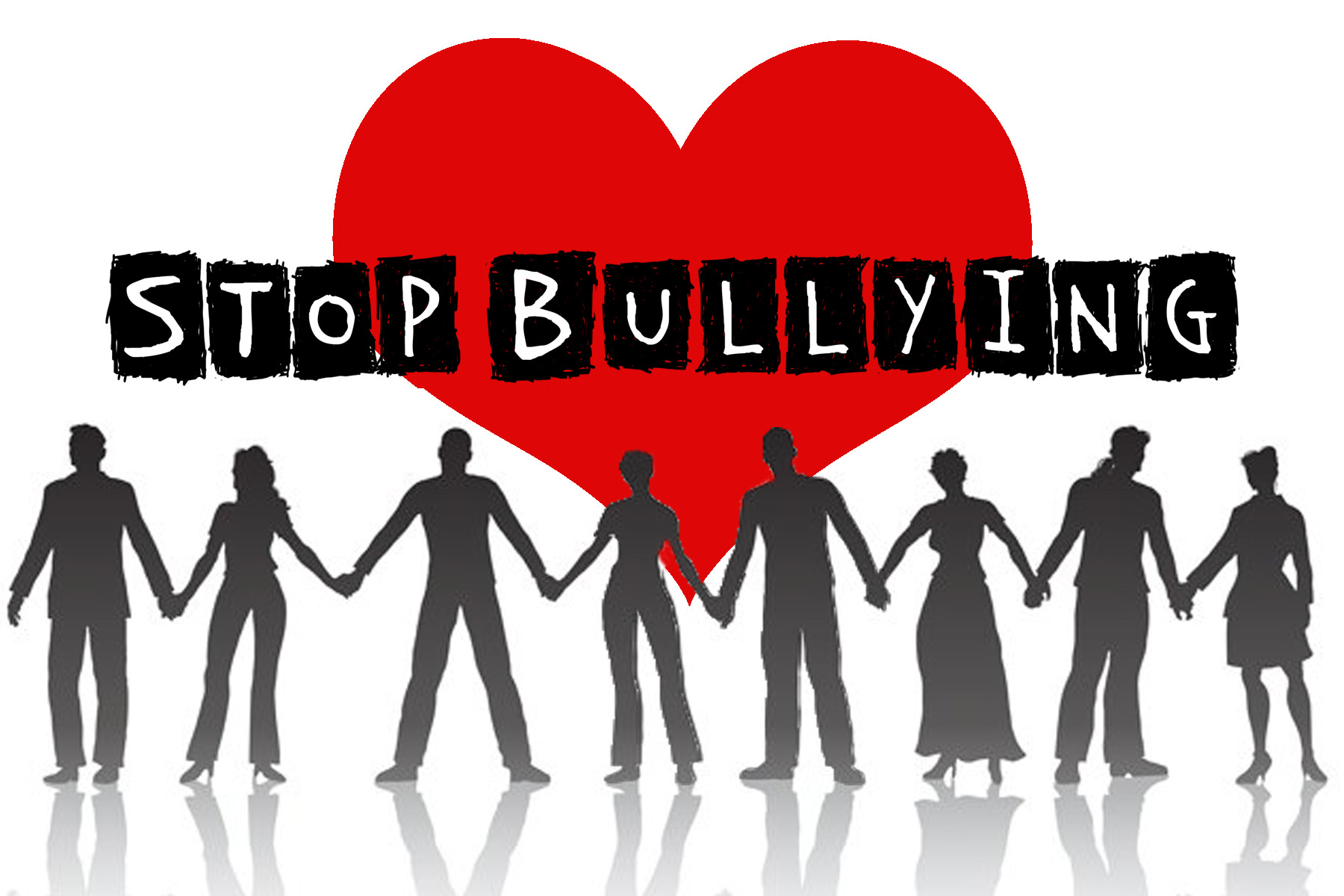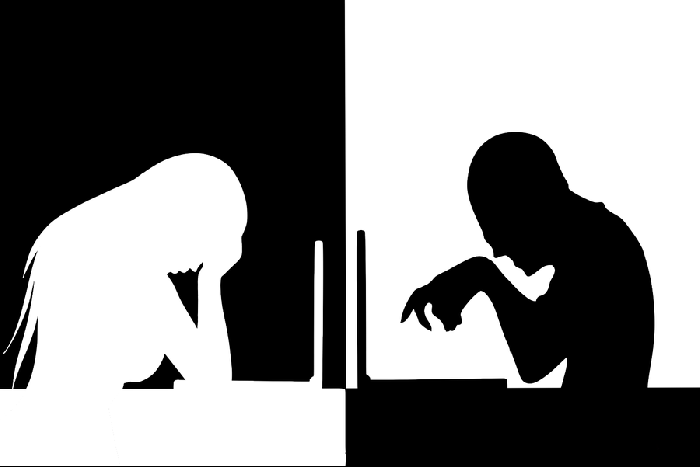LGBTQ Stereotypes in the United States and Social Media
What does stereotypes stand for?
According to Oxford University Press, the noun “stereotype” stands for “A widely held but fixed and oversimplified image or idea of a particular type of person or thing.”
In modern society, everything we know and belief are shaped by the sources around us. From media, to community, to family, we all raise with at least one type of belief toward a topic. For example, my family raised me to believe that men are to be the head of the household, and that they are not able to express their emotions because that is a feminine characteristic. From a very young age, I was already oppressed from fully exploring, and expressing myself as a homosexual, Asian-Vietnamese male.
Today, I want to share with the world the problems my fellow LGBTQ community and I have experienced in society and from the media. LGBTQ stereotypes are very real as the world is becoming more aware of the LGBTQ community. With that, comes stereotypes that hinder a person from truly expressing themselves as an individual. These stereotypes can be ranged from strictly conservative, to mildly conservative. Nonetheless, they are stereotypes that are not necessarily always true.
“It's never a good idea to reduce someone down to a trope or a stereotype; people are so much more complex than just one single ‘type’” (Higgins, 2016).
Common LGBTQ Stereotypes
1)
Gender: “Gay men
are all feminine” (Lipp 2016)
2)
Sexual Attraction:
“Gay men are attracted to all men and can’t control their desires” (Lipp 2016)
3)
Sexual Behavior:
“Gay men are promiscuous and obsessed with sex” (Lipp 2016)
4)
Sex Roles: “Gay
men focus on anal sex and mimic male/female sex roles” (Murray Lipp)
5)
Health: “HIV/AIDS
is primarily a disease among gay men” (Lipp 2016)
6)
Relationships:
“Gay men are not relationship-oriented” (Lipp 2016)
7)
Childhood: “Male
homosexuality is caused by parenting or trauma in childhood” (Lipp 2016)
8)
Pedophilia: “Gay
men can’t be trusted around male children” (Murray Lipp)
9)
Parenting: “Two
gay men as a couple can’t raise healthy and happy children” (Lipp 2016)
10) The Transperson Who Just Doesn't Love Themselves (Higgins,
2016)
11) The Bisexual Who Just Wants Attention (Higgins, 2016)
Personal Experiences
I briefly mention how my family embedded a social
standard of masculinity into my mind, and body. But how exactly was I affected
by other sources like peers, mentors, and media?
I remember growing up barely having any friends because I was an easy target for people to pick on when it comes to homosexuality. Why you may ask? Well, my parents think it is a cute trend of the 1990’s to have men wear one earring. So of course, I was an epitome of that trend. That backlashed so much because it proves to be more than a trend for me, it became a stereotype. Kids would pick on me at school, calling me names like “fag,” “queens,” “trash,” and so on. Adults would questioned my sexuality to my parents, whether I was there to hear or not, it was constantly happening. I hated it because it pushed me to a corner, where I was afraid to go out and have a “perfect childhood.”
It hurts the most when I had to take classes with homophobic or conservative teachers. They tend to look at me in a sense of fear, disgust, and disappointment. For instance, these P.E. teachers in middle-school and high-school were tremendously harsh on me. They would idolize and treats the “straight boys” with fair treatments while I was neglected because I seem weaker, and lower. I remember this one gay choir teacher who would not want to work with me because I was like a “competition” to him. It is already disgusting feeling hatred from non-LGBTQ community, now I have to also deal with the LGBTQ community.
Media is probably one of the biggest perpetuator of LGBTQ stereotypes. There are signs in certain cities saying “being gay is a sin.” Some movies would exaggerate LGBTQ characters with common stereotypes like “gay men are promiscuous, sassy, and loud.” The one that is really common is when LGBTQ characters get killed off in the show. This is quite dangerous for those who live in smaller towns where there are lack of resources or support for the LGBTQ community (Oregon Live). Could cause them to be afraid to “come out,” or live in a comfortable and more expressive environment
Victims of LGBTQ Stereotypes
1. Matt Slover (20 years old) - Gay
“I’m Hispanic and Native American. I was born in Pomona CA and raised in Visalia CA, and I’m gay. The biggest stereotype I’ve faced is people instantly assuming I’m going to be super feminine being gay and into pop culture and the latest trends. Also that I’m a bottom. A lot of the time I have to tell people I’m gay though because I don’t possess these traits, otherwise, people assume I am straight. Except for most other gay men. We kind of have a ‘gaydar’ for that.”
2. Alberto Rodriguez (25 years old) - Queer
“My
name is Alberto Rodriguez. I identify as a Gay Male Latino Cub, I use the
pronouns he, him, and his. I am 25 years old and I am the first in my entire
family to come out as Queer. My experience in the Gay Community has been a
revelation of new worlds and ideas. I will say that the stereotypes that exist
in the gay communities can also exist in other heteronormative communities.
They are there because at times people like to play into it, in forms are
fetishes. One of the first things I noticed is that the Gay communities has
sub-communities. For example, the gay community can be broken up into different
races, physical appearances, and classes. The impact of creating so many
sub-communities can be harmful, especially when first coming out and first dating,
but it can also provide a place to belong to.”
“When signing up for dating apps such as Grindr, Scruff, Jack’d, just to name a few, there is a questionnaire about how the individual identifies and what they are into. Some of the questions are ask what your sexual position you are into Top, Bottom, Verse, Power Top, Power Bottom. Depending on what you pick depends on how respond to you. The moment you veer from a specific label you are questioned. So if you choose that you are a Top or power top, People expect you to be dominant and take charge, it’s a very hyper masculine label. A bottom or power bottom is supposed to be the submissive counterpart to the Top, the people who receives from sexual acts. These labels seem to be used all across that board.”
“When it comes to physical attributes, the ideal physique is that of white, European, Adonis like bodies. These are men who have six packs, have a square jaws, hairless, tall, with light colored eyes. Any imperfection on the male bodies means that you become part of a smaller group. from what I’ve seen, some of these groups we have are the jocks, muscular, chub, twinks, hairy, smooth, bears, leather just to name a few. A Jock is someone who has athletic body, watches sports. Some who is muscular is exactly that, a guy with a muscular body, they don’t necessarily have to be into sports. Chub are guys that are a bit out of shape, have a belly. Twinks are guys who are typically smaller, slimmer than the “average” guy. Hairy, are guys who are into body hair or have body hair. Smooth, is the opposite, guys who rather enjoy a hairless body. A bear is a guy who can be wider framed, hairy, or smooth, but adhere to masculine stereotypes. A Cub is a younger bear. Leather, guys who enjoy wearing leather clothes, originally it was a biker thing but has crossed over into many other communities. People will have multiple labels attached to themselves and go into multiple spaces.”
“Men who come from different economic class will hang out in different locations. For example, wealthier gay men, might go to West Hollywood or Orange County. In truth there are many bars and clubs that are outside of West Hollywood and the OC that are LGBT friendly.”
3. Daniel Cordova (21 years old) - Bisexual
“My
name is Daniel Cordova, and I’m 21 years old. I was born in El Salvador, and
came to the US when I was 8 years old. I identify myself as a bisexual man. I
come from a strict Christian family. They haven’t been accepting of me, but
luckily I’ve had so many close friends give me the support I need. I’d say that
some of the stereotypes that I run into from my parents is being labeled as
‘sexually confused’ or ‘simply going through a phrase.” Others that know me
just assume that I’m ‘gay but do not want to admit it.’ A lot of people believe
bisexuals are ‘confused gay’ or ‘curious’ people. I personally can say that I
am attracted to either a man or a woman, but then I choose who I want from the
two depending on the person and their qualities.”
4. Jaden H (27 years old) – Transsexual
“Mexican-American. Pansexual; 4 years on hormone replacement therapy (hrt), 4 years post-chest reconstruction surgery, 2 years post hysterectomy.”
“I’ve dealt with the stereotypes of people assuming that I couldn’t cut it as a lesbian so I became a man instead” (family members). Also had people assume that there’s “only one way to be a man and if you don’t present that way, you’re not really transitioning.” Within the community: “not trans enough” if you’re not on hormones or don’t want/can’t have surgeries. That Trans mean gay; a lot of people seem to assume that gender and sexuality are the same. They are 2 very different parts of a person’s existence. To me, sexuality is essentially attraction, gender is an identity. Both have their own spectrums and both can be as fluid as the person deems appropriate for themselves.”
5. Alexia Baca (20 years old) – Straight
“I do not identify myself with LGBTQ identity, but the stereotypes I think of are that the LGBTQ community is very accepting; since their sexuality is not accepted by many. I have many friends who are a part of the LGBTQ community and they are very fun, easy-going, and open-minded. They are a good time and good friends as well. I do not have any negative outlooks of the LGBTQ community.”
Ways to prevent stereotyping for you and the younger generations
“As the U.S.A. continues
to evolve, and as gay men become increasingly more open about our true
identities, we must take advantage of all opportunities to educate others about
what is correct, and what isn’t, in relation to male homosexuality” (Lipp, 2016).
“It's important to always
keep an open mind and avoid relying on stereotypes as a lens to see people,
even if you mean it in the best or most lighthearted intentions” (Higgins, 2016).
[Wilson] “Cruz said that for LGBTQ people, ‘visibility and representation is still incredibly important.’ Every kind of person just wants ‘to be seen,’ he said, as ‘part of the human fabric’” (Oregon Live).
Sources
Higgins, M. (2016, February 05). 5 LGBTQ Tropes & Stereotypes To Stop Perpetuating. Retrieved December 1, 2017, from https://www.bustle.com/articles/140007-5-lgbtq-tropes-stereotypes-to-stop-perpetuating
Lipp, M. (2013, June 19). Myths and Stereotypes That Dehumanize Gay Men Must Be Challenged: Start With These 10! Retrieved December 1, 2017, from https://www.huffingtonpost.com/murray-lipp/gay-men-myths-stereotypes_b_3463172.html
Turnquist, K. (2017, August 06). TV must stop promoting stereotypes, LGBTQ actors and creators say. Retrieved December 1, 2017, from http://www.oregonlive.com/tv/2017/08/tv_must_stop_promoting_stereot.html















